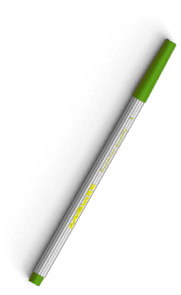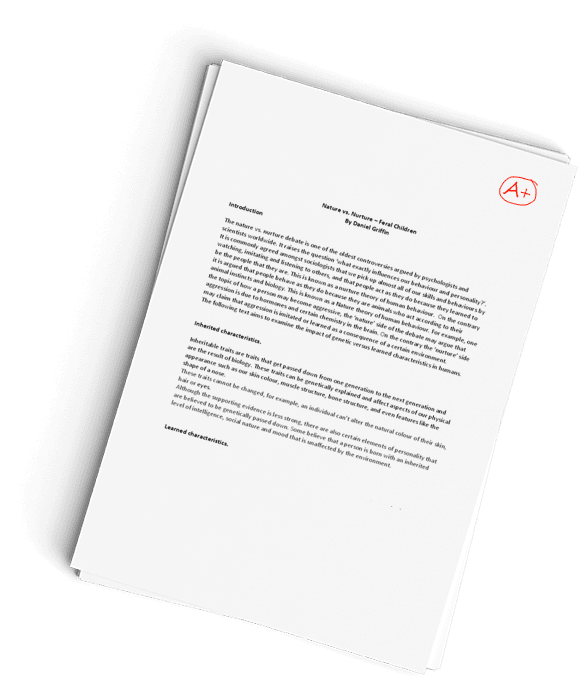NSG 5003 South University Types of Hypersensitivity Discussion and Response
Question Description
Respond to at least two of your classmates. Participate in the discussion by analyzing each response for completeness and accuracy and by suggesting specific additions or clarifications for improving the discussion question response. Please use APA 7TH edition, please be sure that response to peers advance the discussion by asking a question.
Peer Question #1Dana Moore posted
Hypersensitivity is the bodies response to an antigen that results in disruption to the person. McCance and Huether (2018) noted that it can be broken down into two categories: source and mechanism. They defined the sources as allergy, autoimmunity, and alloimmunity. Allergy indicates the substances in the environment, autoimmunity is the body reacting against itself, and alloimmunity occurs when the body reacts against another, for example the importance of the Rh factor during pregnancy (McCance & Huether, 2018). When describing the mechanism of hypersensitivity reactions, they broke it down into four types: Types I, II, III, and IV.
Type I were described as an immunoglobulin E induced and what occurs as by-products of mast cell stimulation. McCance and Huether (2018) noted that common allergies are considered type I reactions, but not all allergies were type I. Type I reactions could be minor, but also as severe as anaphylaxis. The outcome of the reaction depends on the type of allergen. They noted that foods or medications that are ingested could cause vomiting or diarrhea, whereas inhaled allergens such as pollen could cause runny nose, watery eyes, and other respiratory type symptoms. Type II were described as tissue specific, and they noted that antigens bind to specific cells. An example they mentioned was a mismatched transfusion reaction when RBCs are destroyed. Additionally, they indicated that in a type II reaction the cells may not necessarily be destroyed, but they could malfunction as indicated in graves disease when the antibody affects TSH production. Type III hypersensitivity reactions, as discussed by McCance and Huether (2018), occur when the antigen is released into the circulatory system and binds with the antibody and then are relocated in the wall of a vessel or in tissue. They noted two models of type III reactions: serum sickness and arthus reaction. Raynaud phenomenon is an example they noted as a serum sickness reaction because immune complexes called cryoglobulins precipitate in cooler climates causing decreased or blocked circulation to extremities. Which is when we, as nurses see the pale or bluish fingers/fingertips of an individual which is accompanied by pain. Arthus reaction was described as repeated exposure to an antigen causing an inflammatory reaction such as swelling, redness, bleeding, and damage to the affected area. They noted that this type of reaction starts within an hour of exposure and peaks around 6-12 hours. In the case study the infant is experiencing a type III hypersensitivity reaction to the vaccine site received six hours earlier. McCance and Huether (2018) indicated that types I, II, and III are caused by an antibody, but type IV are caused by T lymphocytes. Interestingly, they noted examples of type IV reactions such as type I diabetes mellitus, hashimotos thyroiditis, tissue graft rejection and contact reactions from plants and metals.
In practice I believe we have all dealt with someone who has suffered a hypersensitivity reaction. In practice I have had patients who have had minor to anaphylactic reactions to drugs. I occasionally float to our rheumatology infusion suite, and I think it is very interesting to read about these hypersensitivity reactions and how many of the common autoimmune diseases I see have such different mechanisms. I have always known that rheumatology diseases were very complicated, but I have spent so much of my healthcare career working in cardiology.
According to Centers for Disease Control ([CDC], 2020) immunization schedules, a child around 19 months of age would be most likely receiving boosters of the HepB, DTaP, inactivated poliovirus and HepA. While noting the childs symptoms of a reaction at the injection site consisting of redness, swelling and pain within 6 hours of receiving a vaccine, the provider would most likely diagnose it as an Arthus reaction. Arthus reactions are a type III hypersensitivity reaction that occurs after receiving a vaccine. This type of reaction can cause pain, swelling, redness and sometimes necrosis at the injection site, typically within 6-12 hours of receiving the vaccine (Peng et al., 2019). Peng et al. (2019) discussed that it was more common to see an Arthus type reaction to DTaP, DTP, DT, and HepB. Additionally, some of their research showed that booster vaccinations were more likely to induce an Arthus reaction. They also noted mild reactions generally did not need any treatment, but the more moderate to severe reactions were treated with diphenhydramine, promethazine and/or cortisone. According to the CDC (2020) vaccine recommendations and guidelines of the Advisory Committee on Immunization Practices (ACIP), an Arthus type reaction would indicate a precaution in proceeding with additional DTaP vaccine. The guidelines state that any vaccine containing a tetanus-toxoid should be avoided for at least 10 years after an Arthus reaction.
As previously noted in a type III sensitivity reaction, it occurs within the circulatory system and is deposited into vessel walls and tissue, as noted with the Arthus reaction leading to pain, erythema and swelling. Repeated exposure, such as receiving booster vaccinations, to an antigen reacts with an antibody and forms immune complexes (McCance & Huether, 2018). This damage to the tissues is caused by an increase in neutrophils and lysosomal enzymes.
Centers for Disease Control and Prevention. (2020, February 3). Immunization schedules. https://www.cdc.gov/vaccines/schedules/hcp/imz/child-adolescent.html
Centers for Disease Control and Prevention. (2020, September 28). Vaccine recommendations and guidelines of the ACIP.https://www.cdc.gov/vaccines/hcp/acip-recs/general-recs/contraindications.html.
McCance, K., & Huether, S. E. (2018). Pathophysiology: The biologic basis for disease in adults and children. (8th ed.). Elsevier.
Peng, B., Wei, M., Zhu, F.-C., & Li, J.-X. (2019). The vaccines-associated Arthus reaction. Human Vaccines & Immunotherapeutics, 15(11), 2769-2777. https://doi-org.su.idm.oclc.org/11.1080/21645515.2019.1602435
Peer Question #2 Caitlin Dinapoli posted
The immune system is an extensive network performing to protect the host from foreign antigens, chiefly infectious agents. Rote and McCance discuss the role of hypersensitivity as an altered immunological response to an antigen that results in disease or damage to the host (2018, pp.255). The hosts reaction can result with an allergy either with positive or negative effect. Hypersensitivity reactions can be divided into four groups based on reaction- Type 1 hypersensitivity reaction, Type 2 tissue specific, Type 3 immune complex-mediated and Type 4 cell mediated.
Type 1- IgE mediated response; immediate hypersensivity. Type 1 are mediated by antigen specific IgE and the products of the tissue mast cells. This reaction is often termed allergy, which can result in a rapid reaction known commonly as anaphylaxis.
Type 2- IgG or IgM mediated response Tissue-specific response. In type 2 the specific cell or tissue is the target of an immune response. The immunoglobulins involved in this type of reaction damages cells by activating the complement system or by phagocytosis. An example of type 2 reaction is Graves disease.
Type 3- IgG and IgM mediated response- immune complex mediated reaction. This type of reaction is caused by antigen-antibody complexes that are formed in the circulation and deposited later in vessel walls or extravascular tissue, (Rote and McCance, pp.261). Example of this reaction is systemic lupus.
Type 4- No antibody, cell mediated response are mediated by T lymphocytes and do not involve antibody. Examples of type 4 reactions can be seen as contact reactions like poison ivy.
In relation to the case study discussion- the 19-month-old child would be experiencing a type 1 mediated response reaction. The reaction discussed is localized to the childs leg. The reaction was relatively immediate, within 6 hours. The minor symptoms pain, redness and irritability fall within the category of cutaneous anaphylaxis. Per the childs past medical history, he has been previously vaccinated with no adverse reactions.
Discussion with parents would be continue with vaccinations for the duration of series. The discussion is vital to have as some parents may be fearful when a minor adverse reaction occurs. Parents should have transparency and be aware of the risks and benefits of each vaccine. Benefits outweigh risks, however a lack of education and knowledge can put the child in danger of not receiving vaccines.
The pathophysiology of a type 1 reaction include the IgE coating the surface of the mast cell by binding with IgE specific Fc receptors in the mast cell plasma membrane. The type 1 reactions have 2 phases. The first stage is rapid with vasodilation and the latent phase can occur hours after exposure. Ultimately the goal is to sensitize the patient. After sensitization is obtained a hypersensitive reaction will differ in reaction time.
References:
Kroger AT, Duchin J, Vázquez M. General Best Practice Guidelines for Immunization. Best Practices Guidance of the Advisory Committee on Immunization Practices (ACIP).
Justiz Vaillant AA, Vashisht R, Zito PM. Immediate Hypersensitivity Reactions. [Updated 2020 Aug 16]. In: StatPearls [Internet]. Treasure Island (FL): StatPearls Publishing; 2020 Jan-. Available from: https://www.ncbi.nlm.nih.gov/books/NBK513315/
Rote, N. S. R., & McCance, K. L. M. (2018). Pathophysiology: The Biologic Basis for Disease in Adults and Children. In Alterations in Immunity and Inflammation (8th ed., pp. 200275). Mosby. https://digitalbookshelf.southuniversity.edu/#/boo…
***********THIS SECTION REQUIRES A RESPONSE TO PROFESSOR FOR MY DISCUSSION POST**********
This is me: Sabina Thomas posted Oct 2, 2020 2:50
This page automatically marks posts as read as you scroll.
Adjust automatic marking as read setting
Question 1: Hypersensitivity Reactions
The presence of foreign substances in a host can trigger four different types of reactions, known as hypersensitivity reactions: “immediate, cytotoxic, immune complex, and cell-mediated” reactions (McNeil & DeStefano, 2018).
Type 1: Immediate Hypersensitivity
Also known as anaphylactic reactions, immediate hypersensitivity is localized and systemic. Anaphylactic reactions result from antigens “cross-linking with membrane-bound IgE antibody of a mast cell or basophil” (McNeil & DeStefano, 2018). This reaction triggers the release of lipid mediators, bradykinin, and histamine (such as leukotrienes, prostaglandins, and activating factor), substances that can result in tissue damage (McNeil & DeStefano, 2018).
Type II: Cytotoxic Reaction
Antibodies react with antigens bound to cell membranes, “inducing cell lysis through complement activation” (McNeil & DeStefano, 2018). IgM and IgG mediate type two reactions. Examples include blood transfusion reactions, autoimmune diseases, and Rh incompatibility in newborns.
Type III: Immune Complex Reactions
Antigens are bound by IgM and IgG to form antigen-antibody complexes. This leads to complement activation, leading to “PMN chemotaxis and activation,” leading to the release of tissue-damaging enzymes (McNeil & DeStefano, 2018). Chronic infections (such as leprosy) and autoimmune diseases (such as systemic lupus erythematosus) exhibit tissue damages that can partly be attributed to complex immune reactions.
Type IV: Cell-Mediated/Delayed Hypersensitivity
These are initiated by “T-lymphocytes and mediated by effector T-cells and macrophages” (McNeil & DeStefano, 2018). Responses involve the surface of lymphocytes interacting with antigens. Cytokines are produced by sensitized lymphocytes and can damage cell functioning. Cell-mediated reactions take between 48 and 72 hours (sometimes longer) to develop after contact with antigens. Chronic infections, such as fungal infections and tuberculosis, exhibit delayed hypersensitivity.
The child in the case study exhibits immediate hypersensitivity (type I), considering the length of time it takes for reactions to occur.
Question 2: Advice to Parents Regarding Further Vaccinations
My advice is that while it is recommended to have their children vaccinated, there are exceptions, and their children can do without certain vaccines (Healthychildren.org, n.d.). If a child is slightly sick or has a mild cold on the day vaccinations are scheduled, it is okay for parents to have them vaccinated. However, severely or moderately ill children can be asked to come another day. If children have life-threatening reactions after being vaccinated, they should not be given another dose of the same vaccine. Parents should tell the people giving vaccines if their children have ever had severe reactions after any vaccinations. Children should also not get vaccines that contain substances that their bodies have previously reacted to. Parents should always talk to their doctors before they have their children vaccinated (Healthychildren.org, n.d.).
Any medication can trigger severe allergic reactions. Reactions from vaccines are not very common, but they do occur. Parents should look out for signs such as unusual behavior, high fevers, or severe allergic reactions after having their children vaccinated (Healthychildren.org, n.d.). Severe allergic reactions may be characterized by difficulty breathing, swelling of the through and face, or hives. Allergic reactions in children might include loss of appetite, sleepiness, and fever. Older children might exhibit symptoms such as weakness, dizziness, and fast heartbeat. In most cases, reactions to vaccines may occur after a few minutes or hours. If parents suspect that their children have allergic reactions or emergencies that cannot wait, they should rush to the nearest health center or call 911 (Healthychildren.org, n.d.).
Question 3: Pathophysiological Basis for Immediate Hypersensitivity
A B lymphocyte is stimulated by antigen to produce specific IgE, which binds itself to Fc receptors, sensitizing them to exposure. An antigen binds IgE on mast cells on re-exposure, causing degranulation (Life in the Fast Lane, 2019). Prostaglandins, leukotrienes, and histamine are then released, causing systemic or local effects, depending on exposure methods. Systemic reactions are called anaphylaxis, and they may manifest as a combination of rashes, laryngeal edema, bronchospasm, and hypotension. On the other hand, local reactions depend on exposure routes, and they include nasopharyngeal mucosa, allergic rhinitis, and asthma inhaled (Life in the FastLane, 2019).
******Heres the question from professor related to my discussion post******
Hello, Sabina,
You mentioned that the patient was experiencing an anaphylactic reaction/Type 1. Might you be able to provide some additional information supporting that thought with evidence from the case?
Dr. Sebach
Have a similar assignment? "Place an order for your assignment and have exceptional work written by our team of experts, guaranteeing you A results."








